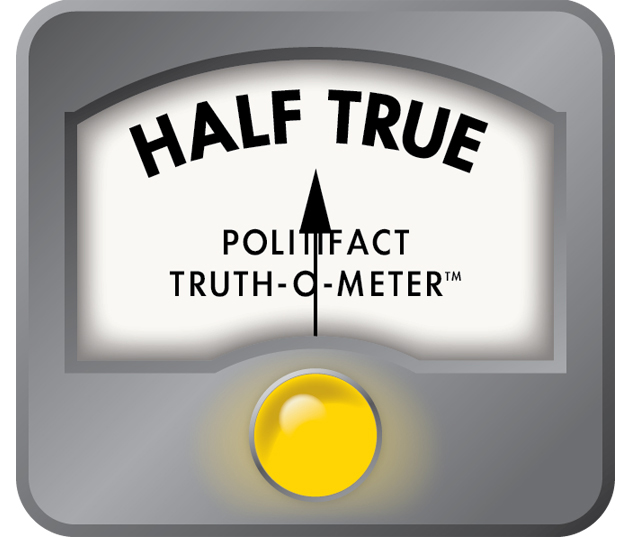Stand up for the facts!
Our only agenda is to publish the truth so you can be an informed participant in democracy.
We need your help.
I would like to contribute
President Donald Trump is eager to sign into law big changes to the tax code.
The House approved its tax rewrite on Nov. 16, and the Senate is trying to clear its version with a full vote this week.
If the Senate passes the measure, the two chambers will have to iron out their differences in a version that can pass both chambers.
Here are the key details you need to know about both bills.
Both plans lower individual income tax rates for the middle class. However, they use a slower-growing inflation measure than the one used now, which causes income bracket thresholds to grow more slowly and thus eventually pushes more people into higher tax brackets.
Both bills reduce the corporate income tax from 35 percent to 20 percent.
They also switch the United States to a territorial system, which only taxes income earned within a country's borders. The Senate bill is more favorable to multinationals, with provisions that increase taxes on intangible income earned abroad while incentivizing the re-entry of intangible assets.
The House-passed Tax Cuts and Jobs Act collapses the current seven-bracket system to four and eliminates many itemized deductions — medical and classroom expenses as well as state and local taxes, for example — in favor of higher standard deductions.
Both the House and Senate bills double the current estate tax exemption for individuals to $11 million, which the House bill eventually repeals in 2024, but the Senate bill keeps. The Senate version scraps the Obamacare individual mandate, while the House doesn’t mention it.
The Senate version is different because of the chamber’s rules. To pass the Senate with 51 votes instead of 60, the bill cannot drive up the long-term deficit. So the Senate measure terminates the individual tax provisions designed to benefit the middle class, including the doubled child tax credit and lower tax rates at each income brackets, by 2026.
The House version drives up the deficit by 1.08 trillion over the next 10 years -- about double the Senate version, according to the Tax Foundation, a conservative-leaning think tank.
Many lower- and moderate-income households already owe no federal income taxes. Those who qualify for the earned income tax credit designed for low-income working Americans may get some money back from the government at tax time.
People on the lower end of the income spectrum could benefit from an approximate doubling of the standard deduction to $24,000 for joint filers, and from an expansion of the child tax credit. But if they use itemized deductions -- such as deductions for state and local taxes, mortgage interest or unreimbursed medical expenses -- they could end up worse off.
Meanwhile, the Senate bill gets rid of the individual mandate penalty, which falls disproportionately on lower- and moderate-income households.
A family could drop their health coverage and end up with what they would have otherwise paid as a penalty -- 2.5 percent of income, or $695 per adult and $347.50 per child, up to a family maximum of $2,085, whichever is higher. But truly coming out ahead would require being lucky and not getting any serious illnesses or injuries.
All told, an analysis of the House bill by the nonpartisan Urban Institute-Brookings Institution Tax Policy Center, found that in 2018, households in the lowest 20 percent of the income spectrum would see an average tax cut worth $60. The next 20 percent would see a cut of $310, and the middle 20 percent would get an average of $830 in savings.
By 2027, these groups would all continue to see cuts, but smaller ones. For instance, the middle quintile would see its cut shrink by more than half, to $360.
Not every taxpayer in those groups would see a cut. But in all the income ranges we cited, and in both years, a clear majority of taxpayers in a given income group would see a decrease, according to the Tax Policy Center analysis.
The general distribution of cuts is broadly similar for the Senate bill.
Several elements of the tax bills would disproportionately benefit wealthy taxpayers.
These include the elimination of the alternative minimum tax, which requires that taxpayers with many deductions pay at least a minimum amount of taxes; the creation of lower rates for "pass-through" income, which covers business income that is taxed on a business owner’s personal filing; and more generous exemptions (in the Senate bill) or outright elimination (in the House bill) of the estate tax.
According to the Tax Policy Center analysis of the House bill, the second-highest quintile of taxpayers would see a gain of $1,610 -- well above any of the lowest three quintiles -- while the highest 20 percent of households would get an even bigger tax cut of $4,860 in 2018. That works out to about 1.9 percent of their income -- the highest of any quintile.
The top 1 percent would do even better, saving $37,100 in 2018, or 2.4 percent of their income. And the top one-tenth of a percent of the income spectrum would see a cut of $174,620, or 2.5 percent of their income.
It’s impossible to say with certainty without seeing the president’s tax returns. However, independent analyses, working from bare-bones public information about a leaked 2005 return, suggest that President Donald Trump stands to benefit in the short term by somewhere in the low tens of millions of dollars.
An analysis by the New York Times found that Trump’s taxes could be cut by $42 million, mainly from the elimination of the alternative minimum tax, along with the lowering of the pass-through tax rate for certain types of business income, offset to a certain extent by tax hikes from eliminating existing deductions.
Another analysis, commissioned by NBC, found by net savings of $22.5 million, based on a similar mix of provisions.
But the biggest impact would come from fully eliminating the estate tax, as the House bill would do. Both analyses found a family gain of $1.1 billion. However, the Trump family could only take advantage of this after both Trump and his wife, Melania, have passed away, which could be decades down the road.
Our Sources
Tax Foundation, Important Differences Between House and Senate Versions of the Tax Cuts and Jobs Act, Nov. 10, 2017
Tax Policy Center, Analysis of the Tax Cuts and Jobs Act, Nov. 20, 2017
Urban Institute-Brookings Institution Tax Policy Center, "Distributional Analysis of the Tax Cuts and Jobs Act as Passed by the House Ways and Means Committee," Nov. 13, 2017
Urban Institute-Brookings Institution Tax Policy Center, "Distributional Analysis of the Tax Cuts and Jobs Act as Passed by the Senate Finance Committee," Nov. 20, 2017
PolitiFact, "Steve Mnuchin uses partial data to say GOP tax bill favors middle-income households," Nov. 20, 2017
PolitiFact, "How much does the Trump family have to gain from GOP tax bills?" Nov. 27, 2017
Phone interview with Jared Walczak, Senior Policy Analyst at Tax Foundation, Nov. 27, 2017
Email interview with Gavin Ekins, research economist at Tax Foundation, Nov. 28, 2017



 PolitiFact Rating:
PolitiFact Rating: 











































